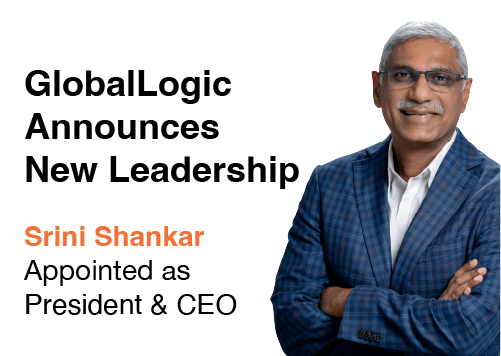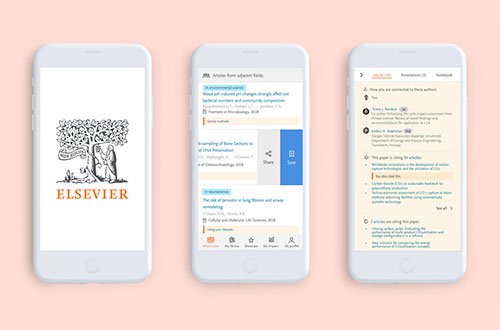- Послуги
Технологічні рішення
Технологічні рішення- Продуктова Стратегія та Дизайн Користувацького ДосвідуОкресліть створені програмним забезпеченням ланцюжки доданої вартості, створіть взаємодії, нові сегменти та пропозиції.
- Цифрова Трансформація БізнесуАдаптуйтесь, еволюціонуйте та зростайте у цифровому світі
- Інтелектуальна інженеріяВикористовуйте дані та АІ для трасформації продуктів, операційної діяльності та покращення бізнес результатів
- Розробка програмного забезпеченняПрискорте вихід на ринок продуктів, платформ та послуг.
- Технологічна МодернізаціяЗбільшуйте ефективність і гнучкість за допомогою модернізованих систем і застосунків.
- Вбудована інженерія та трансформація IT/OTСтворюйте та підтримуйте програмне забезпечення від чіпа до хмари для підключених пристроїв.
- Індустрії
- GlobalLogic VelocityAI
- Блоги
- Про нас
Press ReleaseGlobalLogicJanuary 10, 2025GlobalLogic оголошує про зміну керівництва: Сріні Шанкар ...
САНТА-КЛАРА, Каліфорнія — 10 січня 2025 року — Компанія GlobalLogic Inc., що є частиною...
 Press ReleaseGlobalLogicDecember 18, 2024
Press ReleaseGlobalLogicDecember 18, 2024GlobalLogic і Nokia стали партнерами для створення 5G-інновацій
GlobalLogic оголосила про партнерство з Nokia для прискорення впровадження передових 5G...

- Кар’єра
Published on May 7, 2020Тонкощі CV або Як скласти та куди надіслати, щоб отримати пропозицію мрії про співпрацю
ПоділітьсяRelated Insights GlobalLogic17 February 2025
GlobalLogic17 February 2025 GlobalLogic12 February 2025Переглянути всю статистику
GlobalLogic12 February 2025Переглянути всю статистику Oleh Moroz13 August 2024Recommended authorsAssociate Manager, Engineering, GlobalLogicLead Software Engineer, Engineering, GlobalLogicView all authorsSenior Manager, TAG Lead, GlobalLogic
Oleh Moroz13 August 2024Recommended authorsAssociate Manager, Engineering, GlobalLogicLead Software Engineer, Engineering, GlobalLogicView all authorsSenior Manager, TAG Lead, GlobalLogicДавайте створювати інженерний вплив разом
GlobalLogic надає унікальний досвід і експертизу на перетині даних, дизайну та інжинірингу.
Зв'яжіться з намиCross-IndustryAuthor: Anna Tulina, Career Advisor , GlobalLogic
The topic of creating a resume is always relevant. Describing the pitfalls along the way and the ability to competently present one’s achievements is often equated to tablets of wisdom or a treasure map. However, not everything is as complicated as it seems.
The main problem is that in our professional culture, until recently, there was no tradition of competent and correct self-presentation: it is not taught, it is not talked about, it is not required to write an essay disclosing one’s experience for admission to higher education, programs or internships. As a result, most do not pay due attention to their “Curriculum Vitae” or simply “resume”. However, CV is your working business card, which will be used as a primary “yes” or “no” when considering your candidacy for a vacancy. If it “gets caught”, it will be sent further to the manager and technical specialists for verification, who, in turn, will also form a certain picture of the candidate based on the document. If not, the sender risks even being left without an answer. In this column, we want to share a recipe for minimizing this risk.
Beginning. We create SV
Be simple. Create a normal document in pdf or doc format, where the font is of the same style and size, the lines do not jump, and the paragraphs are equal. The main goal is readability. If you need a sample, more shapes and colors, here are some free and easy resources for creating a CV:
But remember that the most important thing in a resume is information about you and your experience. Therefore, do not overdo it with creativity.
What information should be included in the resume?
In fact, there can be a lot of information, it depends on the position, the company and the industry for which you are preparing a CV. But there are “must-have” points:
1. Name and surname
2. Contacts. Several ways to contact you: mail, skype, phone number, LinkedIn link. You can indicate which communication channel is more convenient for you.
3. The city in which you currently live. This is important information for the recruiter – some companies consider candidates with the possibility of relocation.
4. Place of study : name of the institution, years of commencement and completion, specialization received.
5. Technology stackhard skills – this is about your skills and abilities, as well as the technologies (if the position is technical) with which you worked/are working, with which you would like to work.
6. Work experience : start with the last place of work and end with the first, usually with the months and years of the start and end. Describe your main responsibilities and achievements in past places of work.
7. Level of language proficiency . Use the CEFR international level system for this.
Tips:
1. If you want to join an international company that works with customers from other countries, your resume must be in English .
2. Should I insert a photo? Yes, but it must be an adequate photo of the face , no larger than 5×5 cm. Clothing should be formal smart casual. It is preferable that the photo is relatively new and not from a school album. You can smile.
3. Do not indicate irrelevant experience , or “super ancient”, when you were a student in a computer club – it does not play any role.
4. Describe your duties in detail , everything you did and what you are proud of. This will give recruiters more insight into what you’ve experienced on the job and what you’re more competent at than other candidates. Did you do bug-fixing, mentoring, got a promotion, set up project workflows from scratch? We really want to know about it.
5. Do not lie in your resume . A simple tip that will help all participants in the process not to feel uncomfortable about being misled. Don’t be afraid to not know something and try to impress the interviewer. To stand out – be sincere.
6. If you are an entry-level specialist without commercial experience – be sure to add a link to your github , which has some activity, test projects that demonstrate technical skills. If you have good pet projects, you can describe them in a few sentences in your resume: why did you write this or that piece of code, what technologies did you use.
7. Does CV size matter? Yes. We recommend grouping information on 1-2 pages . Only TOP managers with many years of experience can have 10 pages.
8. Summary or brief overview of your resume. Write here the most important data about you: number of years of experience, achievements, soft skills. Don’t use stale google templates. Summary is a great opportunity for a recruiter or interviewer to quickly get to know your background.
Important: A brief overview automatically becomes a necessary part of the resume if you want to change the technology or direction in which you worked. In this case, you need to explain why the recruiter should consider you for the position if you have irrelevant or little relevant experience. And yes, it must be justified.
9. Mention courses, certificates, awards, etc. in your resume .
10. Do not directly indicate your financial expectations in your CV . It is better to write the desired amount in the cover letter or discuss it directly with the recruiter.
11. Do not use a progress bar to describe the skill level. This format of description is inconvenient and unclear.
12. Check your resume for grammatical errors .
13. Save your resume with the title “name and surname – desired position” . So your resume will not get lost and it will be easier for the recruiter to find it in his documents. When sending your resume to the mail, be sure to indicate in the subject the vacancy for which you want to be considered.
14. Don’t forget to update your resume. It tends to “refresh” every time you change your place of work, start working with new technology or if your scope of responsibilities becomes wider. Even if you have completed a class course, for example, on cloud services, or received a certification – mark it in your resume.
Where to place SV?
Everything worked out and you are extremely satisfied with yourself and your experience. Now the main question arose: “Where should I send the resume? Where will it be seen? Where will it work?”. The summary can be:
- apply through the company’s website , where there are open positions that interest you;
- send directly to a recruiter who can be found through Linkedin;
- to place on work portals .
I hope that after this text you will be able to express your experience, aspirations and skills in the best light and receive an offer in the desired company.
Be in trend and let your resume always be relevant!

